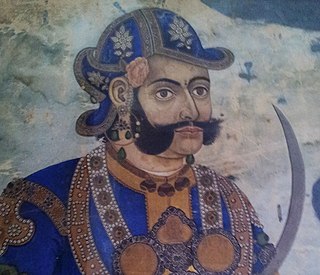
Sideburns, sideboards, or side whiskers are facial hair grown on the sides of the face, extending from the hairline to run parallel to or beyond the ears. The term sideburns is a 19th-century corruption of the original burnsides, named after American Civil War general Ambrose Burnside, a man known for his unusual facial hairstyle that connected thick sideburns by way of a moustache, but left the chin clean-shaven.

A buzz cut, or wiffle cut, is a variety of short hairstyles, especially where the length of hair is the same on all parts of the head. Rising to prominence initially with the advent of manual hair clippers, buzz cuts became increasingly popular in places where strict grooming conventions applied. In several nations, buzz cuts are often given to new recruits in the armed forces or newly incarcerated inmates. However, buzz cuts are also used for stylistic reasons.

A bob cut, also known as a bob, is a short to medium length haircut, in which the hair is typically cut straight around the head at approximately jaw level, and no longer than shoulder-length, often with a fringe at the front. The standard bob cut exposes the back of the neck and keeps all of the hair well above the shoulders.

The high and tight is a military variant of the crew cut. It is a very short hairstyle, characterized by the back and sides of the head being shaved to the skin and the option for the top to be blended or faded into slightly longer hair. It is most commonly worn by men in the U.S. armed forces. It is also popular with law enforcement officers and other public safety personnel. Although "high and tight" is the primary term used in military and law enforcement, the same haircut is sometimes referred to by civilians as a "walker".
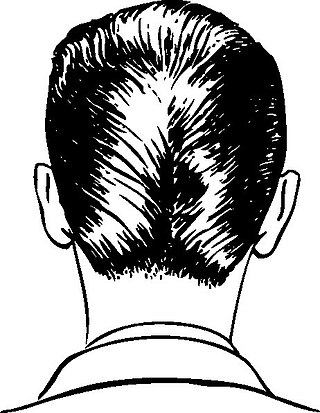
The ducktail is a men's haircut style popular during the 1950s. It is also called the duck's tail, duck's ass, duck's arse, or simply D.A. and is also described as slicked back hair. The hair is pomaded (greased), combed back around the sides, and parted centrally down the back of the head.

A flattop is a classic hairstyle characterized by short hair on the sides and back of the head, with the top hair cut short and styled to stand upright in a flat, level plane.
Layered hair is a hairstyle that gives the illusion of length and volume using long hair for the illusion of length and short hair for volume, as an easy style to manage. Hair is arranged into layers, with the top layers cut shorter than the layers beneath. This allows the tips of the top layers to blend seamlessly with layers beneath.
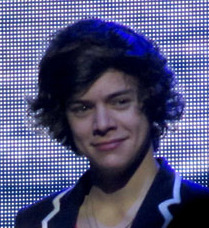
The wings haircut, also known the Mod haircut, Mop top, flippies, flow, Justin Bieber haircut, or skater hair is a popular hairstyle used in the skateboarding, surfer, mod, and preppy community. Typically long, the style can range from long and drooping below the eyes, to a shorter length. The haircut is typically wavy and, if straight, the length comes to halfway down the ears. Instead of lying on the wearer's ears, the hair flips up and comes straight out like an airplane wing, hence the name. The hairstyle was popular among men in the 1960s, 1970s, mid-late 2000s, early 2010s and 2020s.

The temple fade, also known as a Brooklyn fade, taper fade, and blowout, is a haircut that first gained popularity in the late 90s and early 2000s in African American, Italian American, and Hispanic American barbershops as a variation of the bald fade, originating primarily in Washington DC, New York City and especially Brooklyn.

The pompadour is a hairstyle named after Madame de Pompadour (1721–1764), a mistress of King Louis XV of France. Although there are numerous variations of the style for men, women, and children, the basic concept is having a large volume of hair swept upwards from the face and worn high over the forehead, and sometimes upswept around the sides and back as well.

A shag cut is a hairstyle that has been layered to various lengths. It was created by the barber Paul McGregor. The layers are often feathered at the top and sides. The layers make the hair full around the crown, and the hair thins to fringes around the edges. This unisex style became popular after being worn by various celebrities, including Joan Jett, David Bowie, Mick Jagger, Rod Stewart, David Cassidy, Jane Fonda, Stevie Nicks and Florence Henderson in the early 1970s. During the 1990s, Jennifer Aniston popularized "The Rachel" hairstyle, and Meg Ryan wore a shag in the early 2000s. The haircut had a resurgence in popularity during the early 2020s.

Short hair refers to any haircut with little length. It may vary from above the ears to below the chin. If a man's hair reaches the chin, it may not be considered short. For a woman, however, short varies from close-cropped to just above the shoulders. This varies from culture to culture, in more traditional societies in Eastern Europe, Asia, and the Islamic world, short hair on women means anything shorter than chest length with chest length to elbow length being considered medium-length. However, among more progressive societies with far less structured gender norms, the classic bob is considered medium-length with "short hair" referring to pixie cuts and similar hairstyles. Different styles of short hair include the bob cut, the crop and the pixie cut.

Hairstyle fashion in Rome was ever changing, and particularly in the Roman Imperial Period there were a number of different ways to style hair. As with clothes, there were several hairstyles that were limited to certain people in ancient society. Styles are so distinctive they allow scholars today to create a chronology of Roman portraiture and art; we are able to date pictures of the empresses on coins or identify busts depending on their hairstyles.

A brush cut is a type of haircut in which the hair on the top of the head is cut short in every dimension. The top and the upper portion of the back and sides are cut the same length, generally between 1⁄4 and 1⁄2 inch, following the contour of the head. The hair below the upper portion of the sides and back of the head is tapered short or semi-short with a clipper, in the same manner as a crew cut. A variant form may have a slight graduation of the top hair longer from back to front or a quickly graduated bit of hair at the front hairline to achieve a little flip up of the hair at the forehead. A brush that is cut at less than 1⁄4 inch on top may be referred to as a burr. A brush that is cut at 1⁄4 inch or longer on top, and especially one that shows natural curl, depending on length, may be referred to as a short brush cut or brush cut. Brush cuts are traditionally groomed with hair control wax, commonly referred to as brush wax.
The undercut is a hairstyle that was fashionable from the 1910s to the 1940s, predominantly among men, and saw a steadily growing revival in the 1980s before becoming fully fashionable again in the 2010s. Typically, the hair on the top of the head is long and is often parted on either the side or center, while the back and sides are buzzed very short. It is closely related to the curtained hair of the mid-to-late 1990s, although those with undercuts during the 2010s tended to slick back the bangs away from the face.
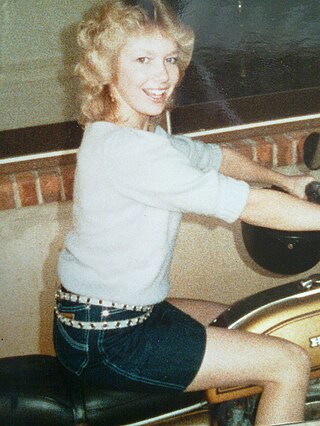
Hairstyles in the 1980s included the mullet, tall mohawk hairstyles, jheri curls, flattops, and hi-top fades, which became popular styles. Amongst women, large hair-dos, puffed-up styles, permanent waves, and softer cuts typified the decade. Big hair that was "often permed to achieve the desired volume" is especially associated with women of the mid 1980s as well as male rockstars of that era, especially of the glam metal genre. Television shows such as Dynasty helped popularize the high volume bouffant and glamorous image associated with it.

An Ivy League, also known as a Harvard Clip or Princeton, is a type of crew cut in which the hair on the top front of the head is long enough to style with a side part, while the crown of the head is cut short. The length of the top hair and the degree of graduation shorter, from the front hairline back, varies with the shape of the skull, density and coarseness of the hair, and the styling preferences of the individual: side-parted crew cut, standard crew cut, brushed forward, etc.
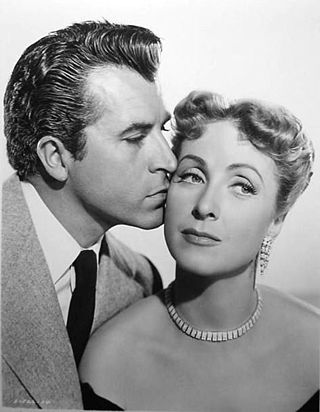
In the Western world, the 1950s were a decade known for experimentation with new styles and culture. Following World War II and the austerity years of the post-war period, the 1950s were a time of comparative prosperity, which influenced fashion and the concept of glamour. Hairstylists invented new hairstyles for wealthy patrons. Influential hairstylists of the period include Sydney Guilaroff, Alexandre of Paris and Raymond Bessone, who took French hair fashion to Hollywood, New York and London, popularising the pickle cut, the pixie cut and bouffant hairstyles.
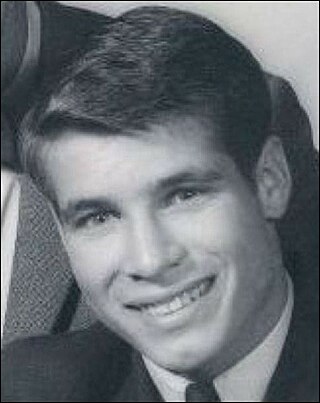
A regular haircut, in Western fashion, is a men's and boys' hairstyle that has hair long enough to comb on top, a defined or deconstructed side part, and a short, semi-short, medium, long, or extra long back and sides. The style is also known by other names including taper cut, regular taper cut, side-part and standard haircut; as well as short back and sides, business-man cut and professional cut, subject to varying national, regional, and local interpretations of the specific taper for the back and sides.

Shanghai-Style Barber Shop is a barber shop opened by a group of Shanghai barbers coming to Hong Kong mainly in the 1950s to give classical Shanghai haircuts. It is popular in Hong Kong among higher class people in the period of 1950s-1970s, offering a range of classical haircut until today. Other than hair-cutting, Shanghai style barber shops provide different unique services include trimming, massaging, nails clipping, etc. Despite the sunset of Shanghai style barber shop in Hong Kong in the modern days, it still attracts loyal customers, especially among males, and costs around HK$70 for a haircut and shave using traditional clippers.





























